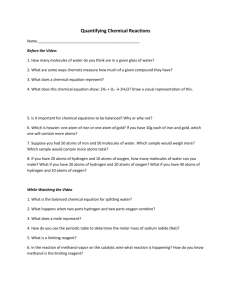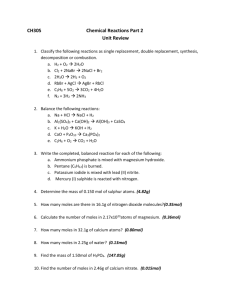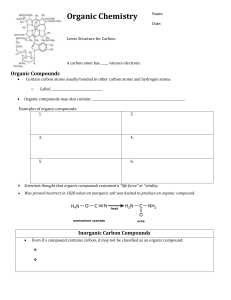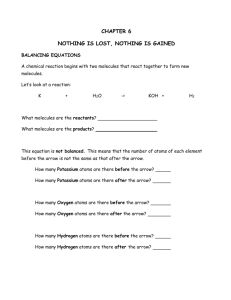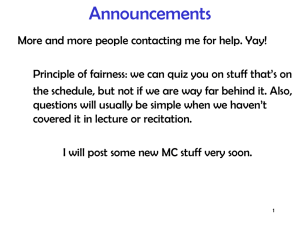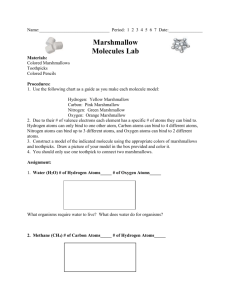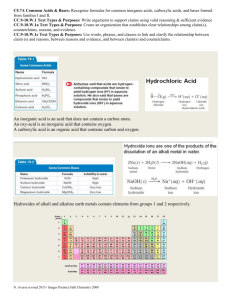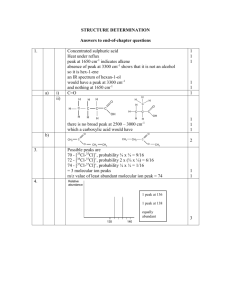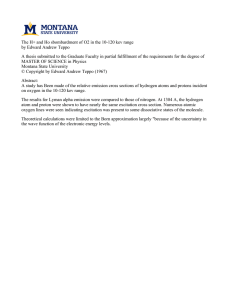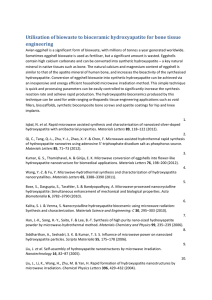Test 1 Study Guide
advertisement
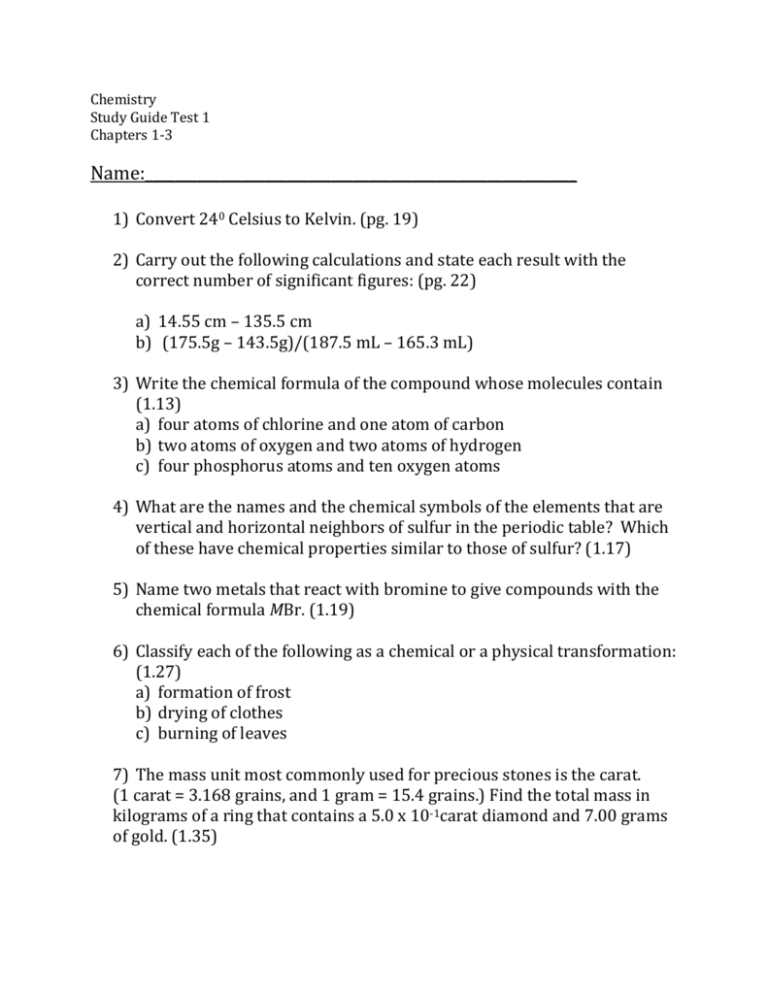
Chemistry Study Guide Test 1 Chapters 1-3 Name:__________________________________________________________ 1) Convert 240 Celsius to Kelvin. (pg. 19) 2) Carry out the following calculations and state each result with the correct number of significant figures: (pg. 22) a) 14.55 cm – 135.5 cm b) (175.5g – 143.5g)/(187.5 mL – 165.3 mL) 3) Write the chemical formula of the compound whose molecules contain (1.13) a) four atoms of chlorine and one atom of carbon b) two atoms of oxygen and two atoms of hydrogen c) four phosphorus atoms and ten oxygen atoms 4) What are the names and the chemical symbols of the elements that are vertical and horizontal neighbors of sulfur in the periodic table? Which of these have chemical properties similar to those of sulfur? (1.17) 5) Name two metals that react with bromine to give compounds with the chemical formula MBr. (1.19) 6) Classify each of the following as a chemical or a physical transformation: (1.27) a) formation of frost b) drying of clothes c) burning of leaves 7) The mass unit most commonly used for precious stones is the carat. (1 carat = 3.168 grains, and 1 gram = 15.4 grains.) Find the total mass in kilograms of a ring that contains a 5.0 x 10-1carat diamond and 7.00 grams of gold. (1.35) 8) What is the mass of 1 quart of water (1 L = 1.057 quarts)? (1.37) 9) A plastic block measures 15.5 cm by 4.6 cm by 1.75 cm, and its mass is 98.456 g. Compute the density of the block. (1.39) 10) In a gas discharge tube containing hydrogen gas, a total charge of 2.44 x 10-12 C is measured at the collector. Assume that this charge is entirely due to the protons. (a) How many protons is this? (b) What mass does this number of protons have? (2.14) 11) How many protons, neutrons and electrons are contained in each of the following atoms or ions: (2.19) (a) 16 8O2(b) 115B (c) 5525Mn3+ (d) 3517Cl212) Calculate the number of moles in the following: (2.33) (a) 7.85 g of Fe (b) 4.68 mg of Si 13) Determine which of the following substances are ionic: (pg. 79) CCl4 CaCl2 Li Co(NO3)2 14) Understand how to read structural formulas and determine line structure and chemical formulas. See 3.5 on pg. 105, 3.7 on pg. 106 15) Name the following compounds: (3.15) (a) S2Cl2 (b) IF7 (c) HBr (d) N2O3 (e) SiC 16) Calculate the molar mass of the following substances: (3.25) (a) carbon tetrachloride (b) potassium sulfide c) O3 (d) lithium bromide 17) One carrot may contain 0.75mg of vitamin A (C20H30O). How many moles of Vitamin A is this? How many molecules? How many hydrogen atoms are in 0.75 mg of vitamin A? What mass of hydrogen is this? (3.33) 18) Tooth enamel is composed largely of hydroxyapatite, which has the following mass percent composition: O: 41.41% P: 18.50% H: 0.20% Ca: 39.89% What is the empirical formula of hydroxyapatite? The molar mass is 1004 g/mol. What is the molecular formula of hydroxyapatite? (3.38)






